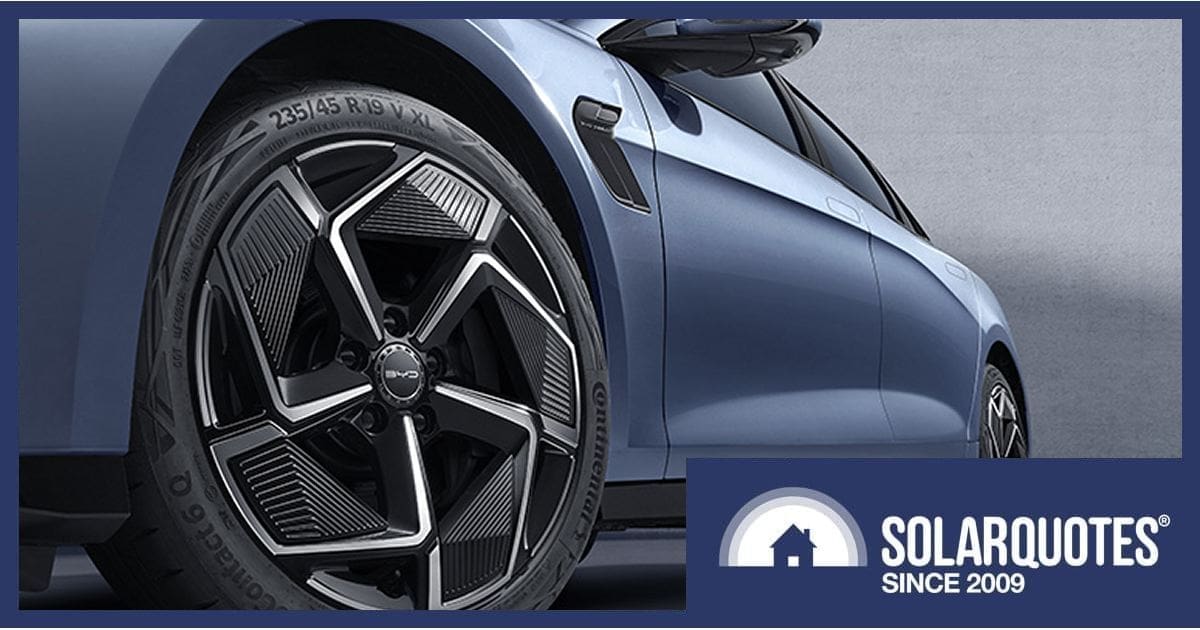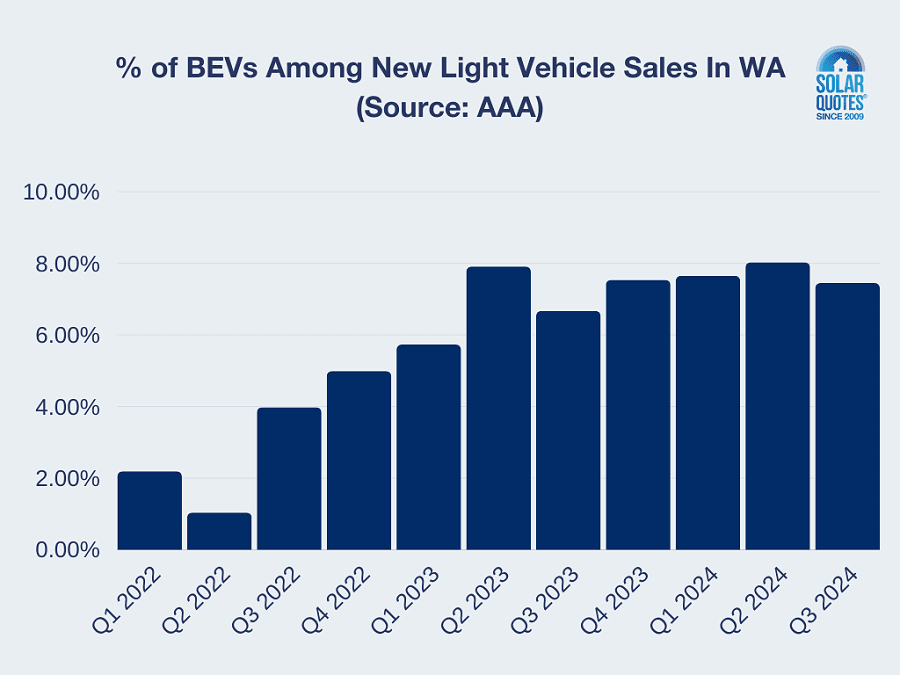WA’s Cook Government has tipped another $9.5 million into the state’s Zero Emission Vehicle (ZEV) Rebate Scheme.
The ZEV rebate, which was launched in May 2022, provides a $3,500 subsidy for eligible vehicles. Originally it was to be available to the first 10,000 applicants or until 10 May 2025 – whichever came first. As part of the 2024-25 State Budget, the WA Government provided an additional $5.2 million investment to meet expected demand with the application cap removed.
Mid-year projections indicated added demand in 2024-25, so the extra $9.5 million has been injected into the scheme to take it through to the application deadline, which is midnight on Saturday 10 May 2025.
As at the end of November 2024, a total of $32,200,000 had been paid out for 9,200 rebates.
WA ZEV Rebate Eligibility
To eligible, vehicles must:
- be zero-emissions and fully powered by batteries or hydrogen fuel cells.
- be a light vehicle (passenger, commercial or light truck); with a gross vehicle mass of 4.5 tonnes or less.
- have a maximum dutiable value of $70,000 or less – and there are quite a few more EV models in this category now than when the incentive originally launched in 2022.
- brand new and never previously registered either here in Australia or overseas.
Unlike some rebates in the renewable energy and electrification space that are actually an up-front discount, this is a true rebate. It’s provided as an electronic funds transfer to an applicant’s nominated bank account only once the vehicle has been licensed (registered), and application processed. Rebate payments may take up to 8-10 weeks to process; so that’s something worth keeping in mind when budgeting.
For further information on the WA ZEV Rebate, see this page.
Electric Vehicle Uptake In Western Australia
Commenting on the latest cash infusion, WA’s Minister Assisting the Transport Minister David Michael said:
“There has been significant growth in the number of electric vehicles on WA roads over the past three years, and for the first time EVs made up more than 1 per cent of WA’s light vehicle fleet in the June 2024 quarter. I expect as more affordable EVs are made available to the WA market, more Western Australians will look to make the switch to zero-emission vehicles, increasing interest in the ZEV rebate.”
The number of electric vehicles in Western Australia increased by over 513 per cent between 31 December 2021 and 30 June 2024 says the State Government, based on information from the Department of Transport. The Automobile Association of Australia (AAA) indicates the following proportions of battery electric vehicles (BEVs) in new light vehicle sales in WA over the last couple of years:
- Q1 2022: 2.19%
- Q2 2022: 1.04%
- Q3 2022: 3.98%
- Q4 2022: 4.99%
- Q1 2023: 5.73%
- Q2 2023: 7.91%
- Q3 2023: 6.67%
- Q4 2023: 7.54%
- Q1 2024: 7.65%
- Q2 2024: 8.03%
- Q3 2024: 7.45%
Other EV Rebates In Australia
Western Australia has been bucking the trend in terms of support for purchasing electric vehicles. There used to be EV rebates in several other states, but WA currently stands alone.
But there are other EV related incentives available in some states such as interest-free loans, registration discounts or charger grants. You can see summaries of these and other incentives for electrification, solar power and battery storage on SQ’s rebates and subsidies page.



 RSS - Posts
RSS - Posts



WA also has a super off-peak electricity charge (9 am to 3 pm) for EV owners. Advantage especially if you have solar panels.
Of interest, is that, apart from a number of BEV’s that are stocked in the eastern states, not being stocked in WA (probably because of the next point), BEV’s cost considerably more (about 10% – a tariff?) in WA, than in the eastern states.
For example, viewing
https://www.carsales.com.au/cars/new/chery/omoda-e5/bx-badge/?sort=~Price
(the Chery Omoda E5, being the only BEV model range available in Australia, that comes with a spare wheel)
and
https://www.carsales.com.au/cars/new/chery/omoda-e5/bx-badge/western-australia-state/perth-region/?sort=~Price
shows the model to be stocked in all of the states of Australia, except WA, and, offered for sale at prices around 5000AUD less than WA, making WA appear to have a tariff of about 5000AUD, on BEV’s, or, on that range of BEV’s…
?
It is a bit like the LDV eT60, for which, the selling price in Australia, is more than two and a half times the selling price in New Zealand…
Where I said
“(the Chery Omoda E5, being the only BEV model range available in Australia, that comes with a spare wheel)”
that should have more correctly, been
“(the Chery Omoda E5, being the only BEV car model range available in Australia, that comes with a spare wheel)”
as the Peugeot ePartner and the LDV eDeliver 7 vans, both come with full sized spare wheels.
That is not quite correct. The latest model of the Hyundai Kona comes with a spare wheel though only a space saver size.
Also of significant note, is that the WA state government, through its coercive control and shonky management of the SWIS grid, is the only state government in mainland Australia, that bans householders with single phase grid connections, from charging BEV’s from their household PV systems, by limiting the capacity of household single phase PV inverters, to 5kW – the only grid in a state in Australia, that does not allow single phase hybrid PV inverters to have capacity over 5kW, when other grids allow single phase hybrid PV inverters with capacity of 10kW, with the WA state government unreasonable limitation, being aggravated by the fact that we have grid connection fuses of 15kW capacity, which should instead, allow for single phase hybrid PV inverters to have capacity of up to 15kW, with the same conditions as for three phase hybrid PV inverters.
With the 10kW single phase hybrid PV inverters that are allowed elsewhere in Australia, having capability of export limiting, down to zero exporting, the limitation on the capacity, by the state government, is simply fanatical coercive control, and, is anti-BEV and hostile to household PV generated clean energy usage in WA.